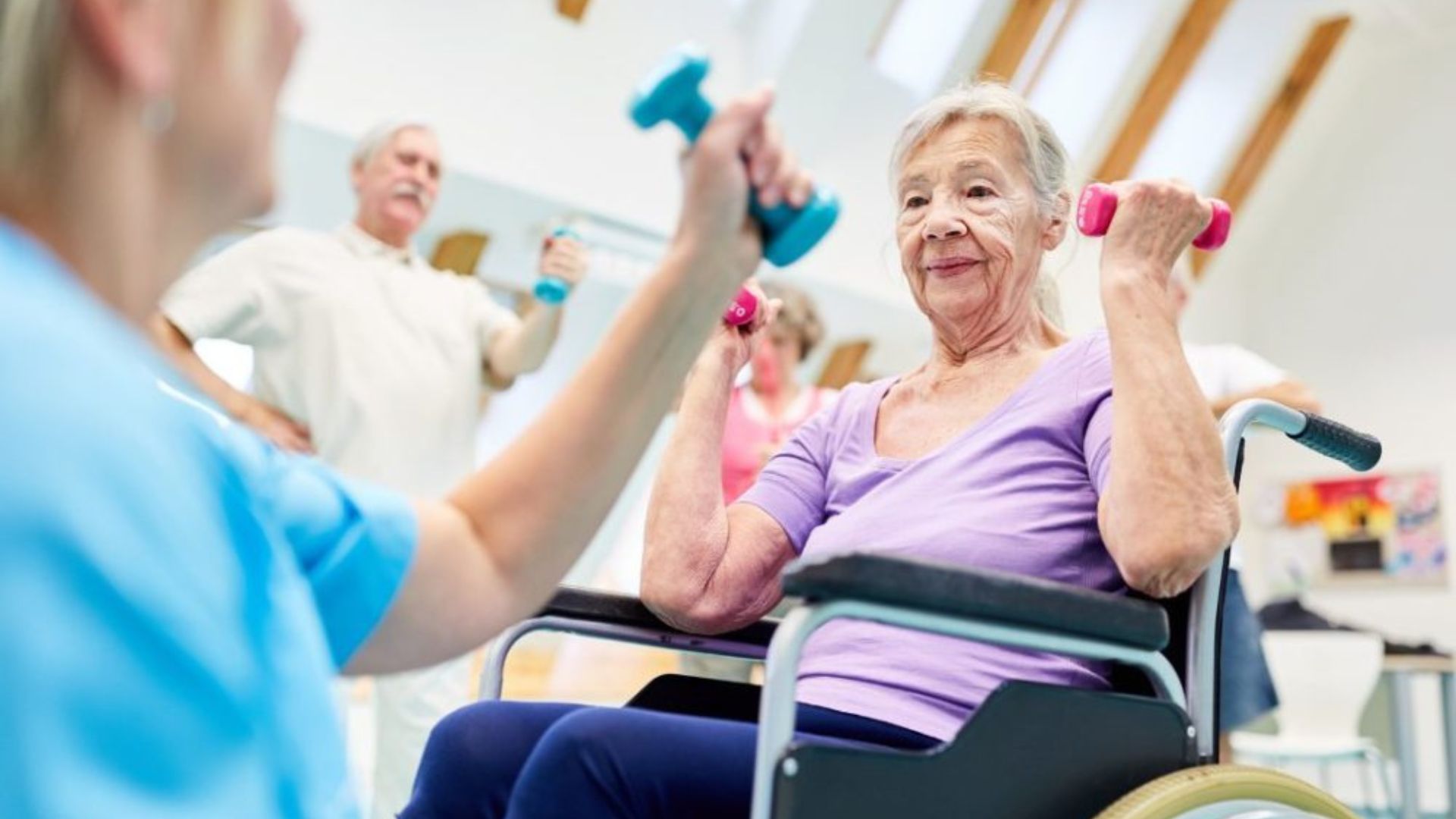Adaptive fitness tech for disabilities is opening new doors to health, movement, and independence. This technology gives people with physical and cognitive disabilities access to personalized exercise and wellness tools. It transforms fitness from a one-size-fits-all model into a more inclusive and supportive experience.
As fitness becomes more digital and data-driven, adaptive technology ensures that people of all abilities can actively participate—and thrive.

How Adaptive Tech Supports Inclusive Fitness
Today’s adaptive fitness tech goes beyond traditional assistive devices. It includes smart equipment, wearable trackers, apps, and even AI-powered systems that adjust workouts in real time based on a person’s mobility, strength, or needs.
For example, a wheelchair user can now access virtual upper-body strength workouts using a voice-activated app. Someone recovering from a stroke might use motion sensors to track arm movements during rehab exercises. These innovations allow people to work out safely, effectively, and with confidence.
Custom Wearables Designed for Accessibility
Many fitness trackers and wearables are now tailored for people with disabilities. Devices from companies like Apple, Fitbit, and Garmin include accessibility features such as larger text, voice commands, one-handed control, and alternative feedback systems like vibrations or audio alerts.
Some wearables even analyze seated movement, detect wheelchair pushes, or monitor physical therapy progress. These tools help users stay engaged with their fitness goals without having to compromise on comfort or accuracy.
More importantly, adaptive wearables give users real-time feedback that can guide improvement or help avoid injury.
Smart Exercise Equipment with Adaptable Features
Smart gym equipment has also become more inclusive. Companies are now designing machines with adjustable height, one-arm operation, or voice-assisted controls. These machines automatically modify resistance levels based on the user’s ability, allowing for safe progression.
For example, digital cable systems can track the user’s range of motion and adjust accordingly. Others include touchscreen displays that offer guided workouts designed for users with limited mobility or coordination.
At-home gym systems like Peloton and Mirror have also started offering accessible workout classes with certified adaptive trainers, ensuring a more inclusive virtual fitness experience.
Apps and AI Coaching for Adaptive Training
Fitness apps have grown smarter, and many now support adaptive fitness programs. These apps offer guided routines, track progress, and recommend modifications based on ability. Whether someone is dealing with a chronic condition, recovering from an injury, or has permanent mobility limitations, these digital tools help them stay active.
AI also plays a key role in adaptive fitness. It can learn user habits, monitor biofeedback, and adjust workouts in real time. For example, if a user shows signs of fatigue during a session, the AI can reduce intensity or offer a rest day. This flexibility helps people train safely while still pushing toward their goals.
Encouraging Mental Health and Social Inclusion
Adaptive fitness tech doesn’t just benefit physical health—it also improves mental well-being. Staying active can reduce stress, improve mood, and foster independence. Social features in apps and devices, like progress sharing, virtual group classes, or online support communities, help users feel seen, heard, and part of something bigger.
When someone with a disability can join a virtual yoga class, track their progress, or celebrate fitness milestones, it boosts confidence and removes feelings of isolation. The connection between tech and empowerment is clear.
Balancing Tech and Relaxation
Staying active and connected to fitness goals is important, but so is taking time to relax and recharge. Many health-conscious individuals explore various ways to unwind between training sessions. For those interested in a fun digital distraction, casino bonuses australia can offer an entertaining break, with curated deals for responsible online gameplay during your off-hours.
Conclusion
Adaptive fitness tech for disabilities is changing lives by making fitness more inclusive and accessible. Through wearable devices, smart gym gear, AI coaching, and inclusive apps, individuals of all abilities can enjoy the benefits of exercise. This technology doesn’t just adapt workouts—it transforms them into tools of empowerment, freedom, and wellness. As innovation continues, expect adaptive fitness to become not just an option—but the norm in a truly inclusive fitness world.
